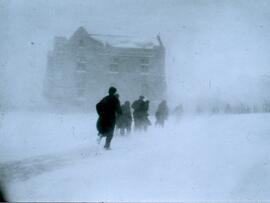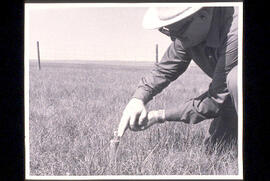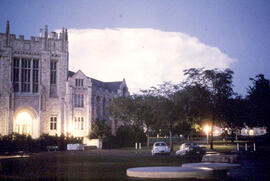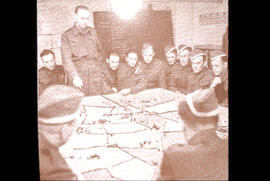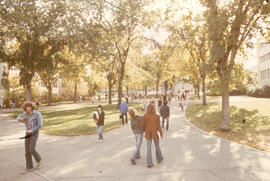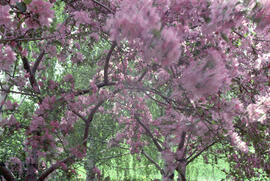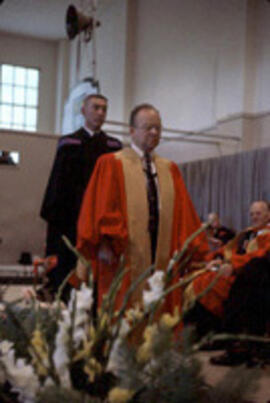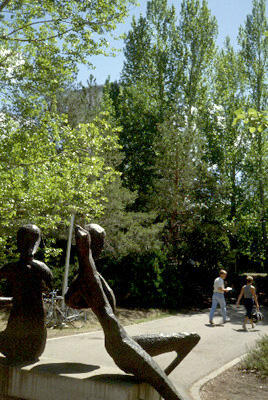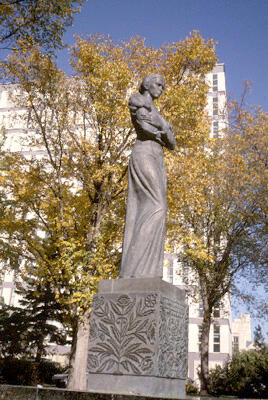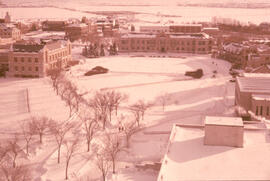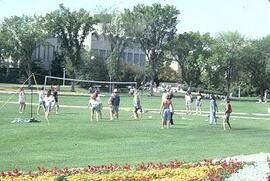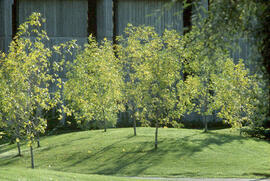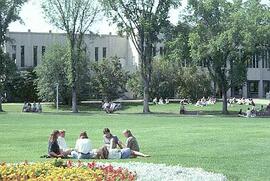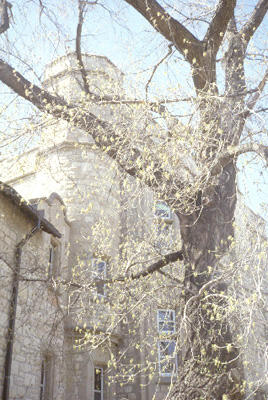Dr. Wolfgang K.H. Panofsky, honourary Doctor of Science degree recipient, awaits presentation at fall Convocation held in Physical Education gymnasium. Norman K. Cram, University Registrar, stands in background.
Bio/Historical Note: Dr. Wolfgang Kurt Hermann Panofsky was born in 1919 in Berlin, Germany. He spent much of his early life in Hamburg, where his father was a professor of Art History. At age 15 he moved with his family to the United States and entered Princeton University. In 1938 Dr. Panofsky graduated with an AB In physics from Princeton after completing a senior thesis titled "The construction of a high pressure ionisation chamber", under the supervision of Walker Bleakney. He then received his PhD in physics from the California Institute of Technology in 1942. In April 1942 Dr. Panofsky was naturalized as a U.S. citizen. From 1945-1951 he held an assistant and then associate professorship at the University of California, Berkeley, before permanently establishing himself as Professor of Physics at Stanford University. Between 1961-1984 he was the director of the Stanford Linear Accelerator Center and continued to serve as director emeritus. Dr. Panofsky was also on the Board of Directors of the Arms Control Association from 1996 until 1999 and remained a director emeritus until his death. Dr. Panosky was awarded an earned Doctor of Science degree from the U of S in 1964. He was a recipient of the National Medal of Science, the Franklin Medal (1970), the Ernest O. Lawrence Medal, the Leo Szilard Award and the Enrico Fermi Award. Dr. Panofsky died in 2007 in Palo Alto, California, at age 88.

